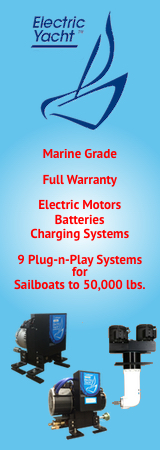@ivafairbairn201
Profile
Registered: 5 months, 2 weeks ago
Learn how to Create Gorgeous Designs with DTF Transfers: Ideas and Tricks
Direct-to-Film (DTF) transfers are quickly becoming a favorite amongst designers and apparel decorators for their versatility, durability, and vibrant results. Whether you are a seasoned professional or just exploring the possibilities, mastering the art of DTF transfers can elevate your customized printing game. Listed below are practical tips and tricks to help you create gorgeous designs utilizing DTF technology.
Understand the Fundamentals of DTF Transfers
Earlier than diving into advanced strategies, it’s essential to know the fundamentals. DTF printing includes printing your design onto a special film utilizing a DTF printer and then applying a powdered adhesive. As soon as heat-pressed onto fabric, the result is a soft, high-resolution print that adheres well to quite a lot of supplies including cotton, polyester, and blends.
What sets DTF apart is its flexibility. Unlike traditional heat transfer vinyl or screen printing, DTF allows for complex, full-color designs without weeding or multiple layers.
Select High-Quality Equipment and Materials
Stunning designs start with quality supplies. Invest in a reputable DTF printer and suitable ink. Make sure you're using PET switch film specifically made for DTF processes—to not be confused with screen printing films. The powder adhesive ought to be even and finely granulated for optimum bonding.
Utilizing high-quality supplies ensures your designs are vivid, crisp, and long-lasting. Low-quality ink or film can lead to boring prints, poor adhesion, or cracking after washing.
Optimize Your Design Files
One of the key factors in creating eye-catching DTF transfers is file preparation. Use high-resolution images (a minimum of 300 DPI) and save them in formats that preserve quality, comparable to PNG or TIFF. Make certain your background is transparent if needed.
Keep away from overly thin lines and extremely small details, as they may not switch well. In the event you're working with text, make positive fonts are readable and well-aligned to the overall composition. Keep in mind how the colours will look on completely different fabric shades and textures.
Use the Proper Color Profiles
For the most accurate and vibrant shade output, calibrate your printer with ICC coloration profiles designed for DTF ink and film. This ensures that the colours you see in your screen are as shut as doable to the ultimate printed result.
Keep away from relying solely on default printer settings. Custom color profiles help eradicate unwanted tints, guarantee brightness, and deliver consistency throughout totally different jobs.
Good the Powder and Curing Process
Applying the adhesive powder evenly is crucial for a robust bond. After printing your design, shake the powder across the film so it fully covers the wet ink, then shake off the excess. Uneven coverage can result in poor adhesion or patchy prints.
Curing the powdered film typically includes a heat press or an oven. Preserve the recommended temperature (normally around 320°F/a hundred and sixty°C) and time (2–3 minutes) to melt the adhesive properly without damaging the ink. A properly cured design ought to feel smooth and rubbery to the touch.
Master the Heat Press Application
Heat pressing is the place everything comes together. Set your heat press to the right temperature (typically 300–325°F), apply medium to firm pressure, and press for 10–15 seconds. Let the transfer cool before peeling the film—this is known as a cold peel process.
Using an excessive amount of heat or pressure can cause colours to fade or the adhesive to bleed. Not sufficient heat may result in partial switch or poor durability.
Experiment and Test Steadily
Each fabric and design is totally different, so testing is essential. Run test prints on comparable material before doing full production. Pay attention to how the switch reacts to washing, stretching, and completely different textures.
Don’t hesitate to tweak your settings and designs based mostly on results. One of the best DTF artists refine their technique continuously through experimentation.
Stay Inventive and Keep Learning
DTF printing is a creative playground. Strive layering designs, using gradients, or combining hand-drawn elements with digital art. Explore new textures, specialty films, and distinctive fabric types.
With observe, attention to element, and the proper tools, you'll be able to constantly produce professional-quality designs that wow customers and stand out in any market.
Ready to create your next masterpiece? Let DTF transfers deliver your vision to life.
If you have virtually any questions relating to where as well as tips on how to use Quick Turnaround DTF Transfers, it is possible to e-mail us in our own web site.
Website: https://www.royaldtf.com/
Forums
Topics Started: 0
Replies Created: 0
Forum Role: Participant




